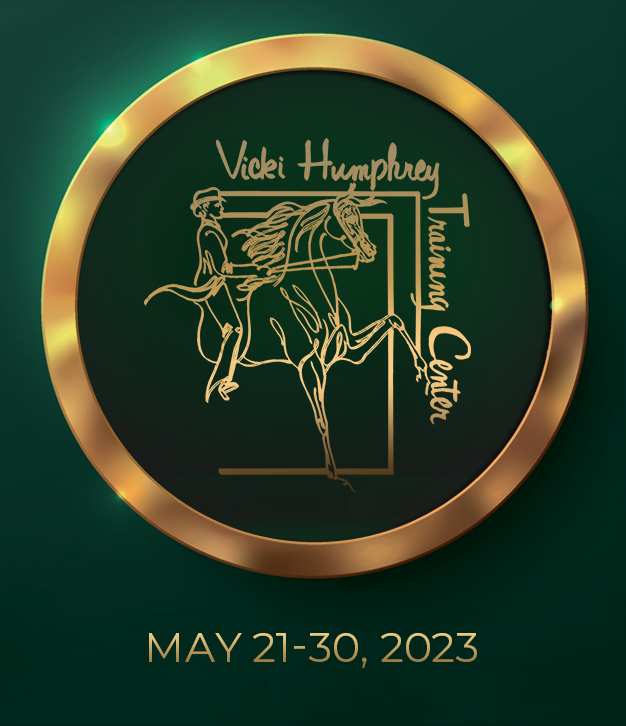Show season day suit
Blue Show Season suit in great condition. Complete with a cream vest, shirt and tie. Approx youth girls size 10/12
$2000
or best offer
Blue Show Season suit in great condition. Complete with a cream vest, shirt and tie. Approx youth girls size 10/12
or best offer
Beautiful coat can be worn for day or evening with two shirt and vest options. Park vest, shirt and tie by Deragnaucourt. Day shirt, vest and tie by Show season. Great condition. Approx 10/12 in youth girl sizing.
or best offer
Beautiful InGait Western jacket. New
Measurements: Bust 36-40
Sleeves, 26 inch, 27 inch back.
Show stopper! I am bringing this coat to Youth if you would like to buy it there.
Black base with multi color design.
If you want this jacket in a different size it can be made.
InGait is a new Michigan based Equestrian clothing supplier.
Shipping is available.
I will be at youth July 20-24. You can text me anytime for additional information.
Custom DeRegnaucourt sidesaddle skirt/apron. Black with black paisley lining. Only worn a few times! Approx. 30” waist and 55” long (worn by rider 5’8” 135lbs).. perfect for English or hunt sidesaddle and versatile in black. Eye-catching purple Jacket and matching brooch pin shown is also available for additional $50
or best offer
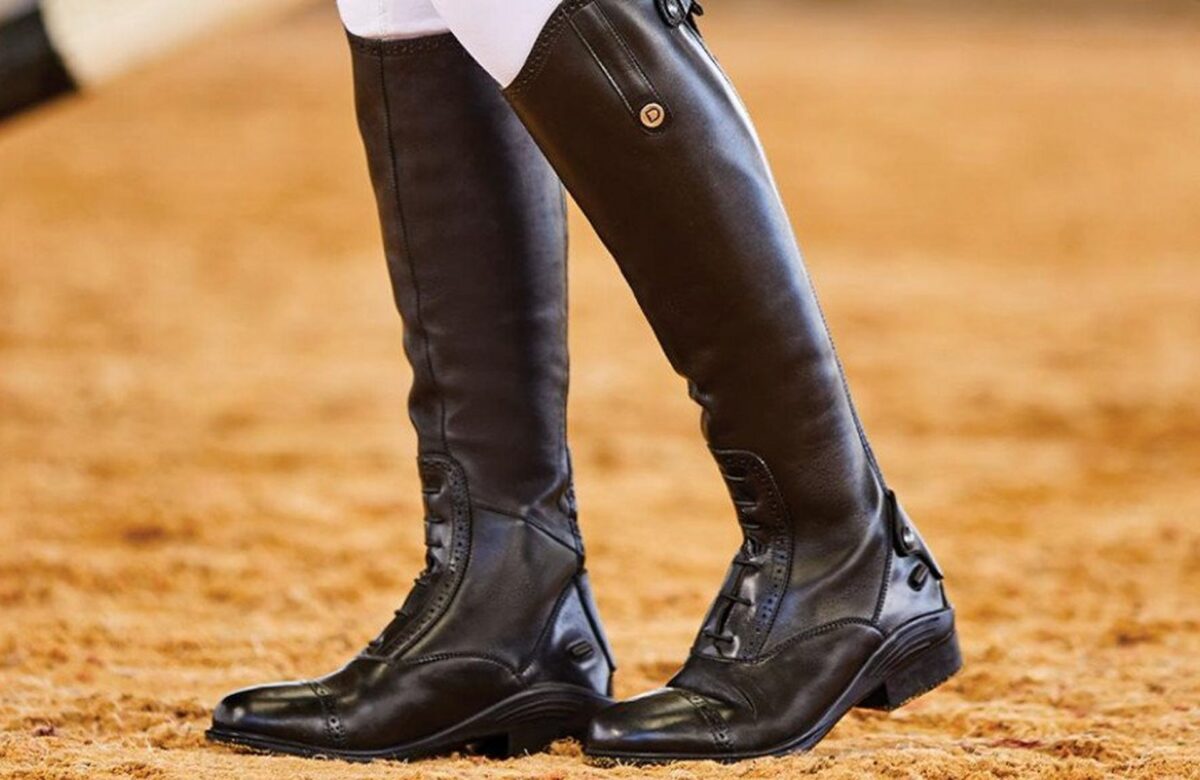
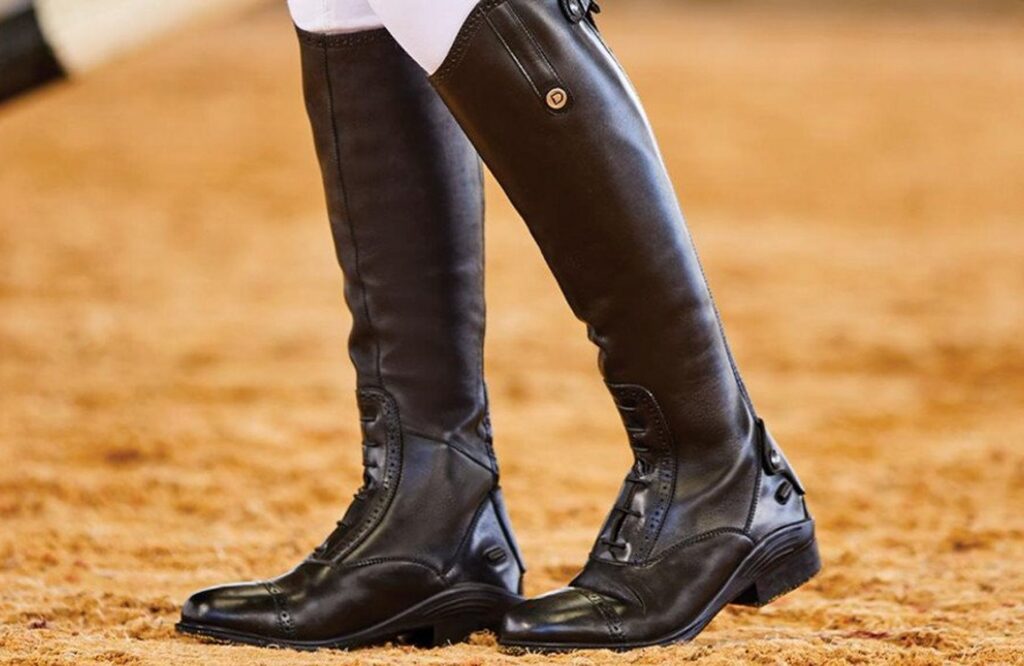
Description of item goes here
or best offer
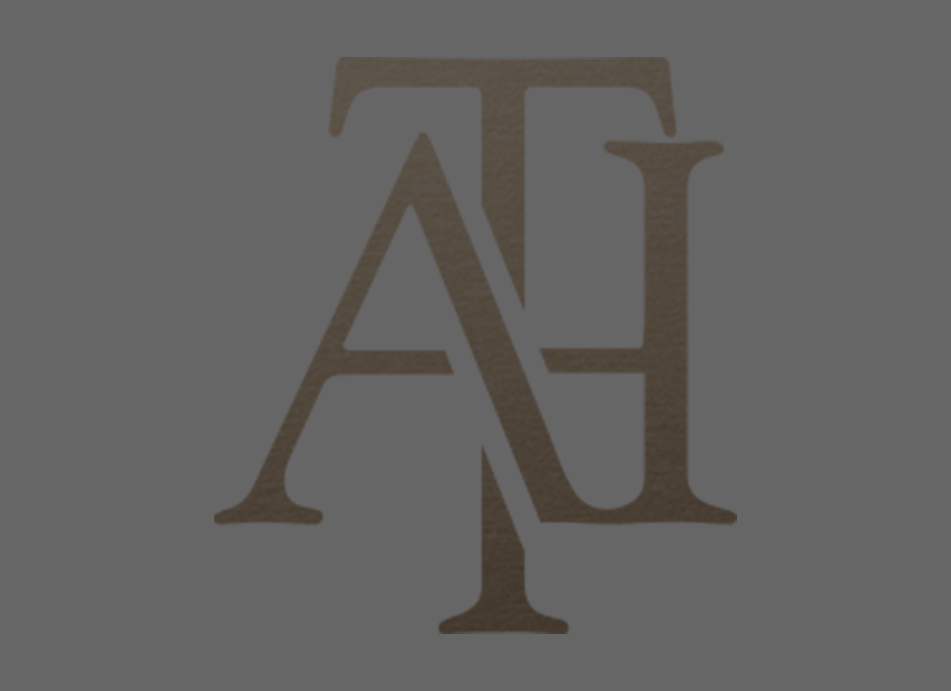
by Channing Turner
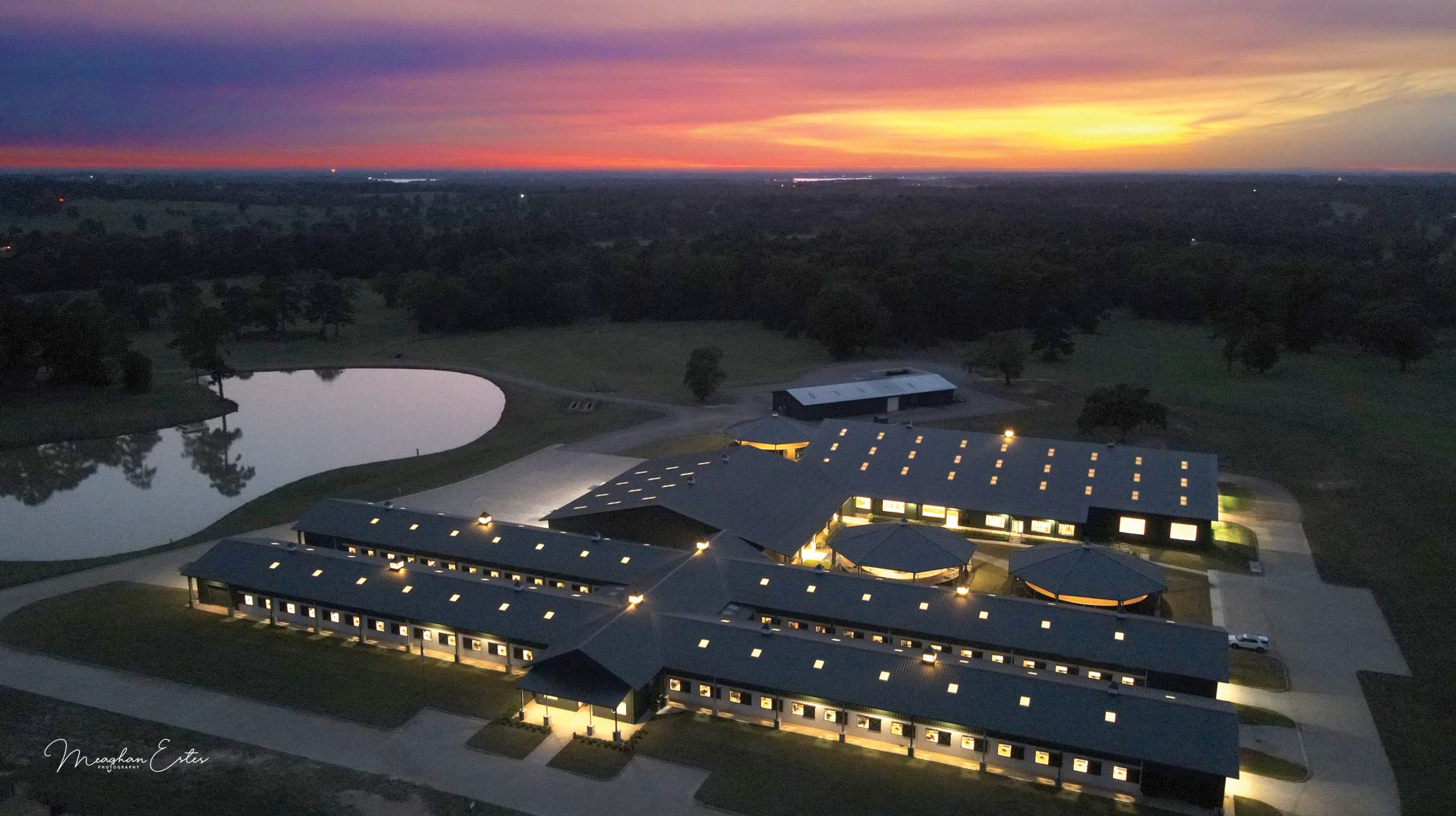
Arabian Horse Times continues their look into impressive barn features with Oak Haven Farms in Bullard, Texas. Speaking with Lauren Krohn on their state-of-the-art facility which caters to the success of their show horses and breeding program, it was originally conceived and sketched on the back of a napkin while she and Jason were at brunch one day. They built the current Oak Haven facility by including ideas they had seen at other facilities and adding their own, while working closely with the builders during construction to determine which features were feasible.
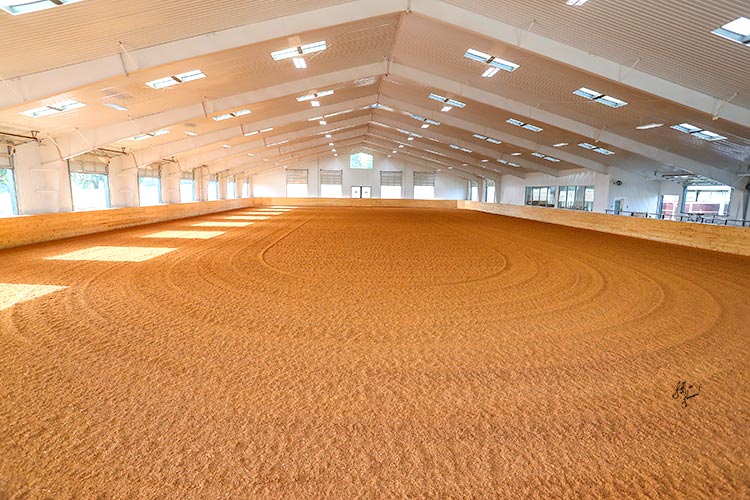
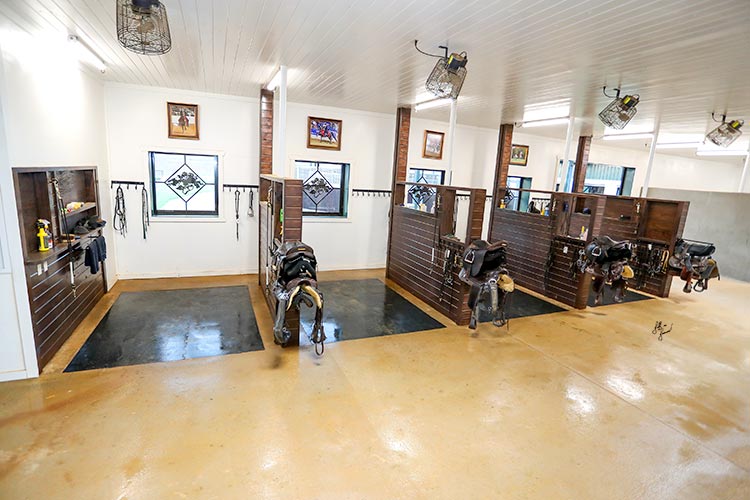
Farm Features
Oak Haven’s open-air setup consists of 120 stalls (four for foaling), all of which have an aisleway window for seeing their neighbor, as well as a window view to outside. The well-ventilated barn—vitally important to protect against the Texas heat—contains eight groom bays, two for each trainer (Lauren, Jason Krohn and Cassie Gillespie), with two extra crossties for horses that are getting ready to lunge, as well as additional crosstie bays for the farrier and vet to work, and a climate-controlled room for clients to store show clothes.
Separate from the stall area and Lauren’s favorite feature at Oak Haven is their arena with a viewing deck and lounge. Having the arena separate means horses being worked are not distracted and the stalled horses are not disturbed.
Also on-site are two round pens, an equisizer used during show season to keep the horses left behind in shape, and a large shop to store trucks and trailers—convenient and crucial for loading and unloading out of the elements.
Putting Plans in Motion
Lauren believes every barn should be set up for efficiency. Having everything close together allows for work to get done quicker and is streamlined.
Her advice to anyone thinking about building a barn? “Think before you do,” she says. “Talking about it is much different than building, so most importantly, plan ahead, because it may be impossible to change some things after the fact.” Case in point … when Oak Haven was being built, they planned on having 12×12 stalls, but because of the thickness of the concrete walls, the stalls ended up not quite 12×12.
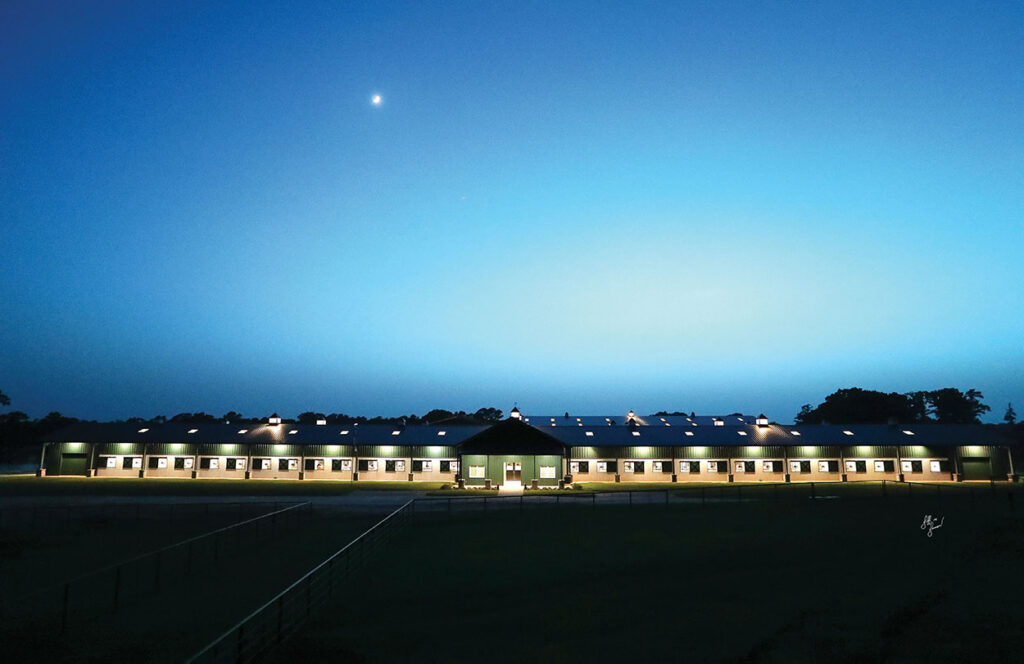
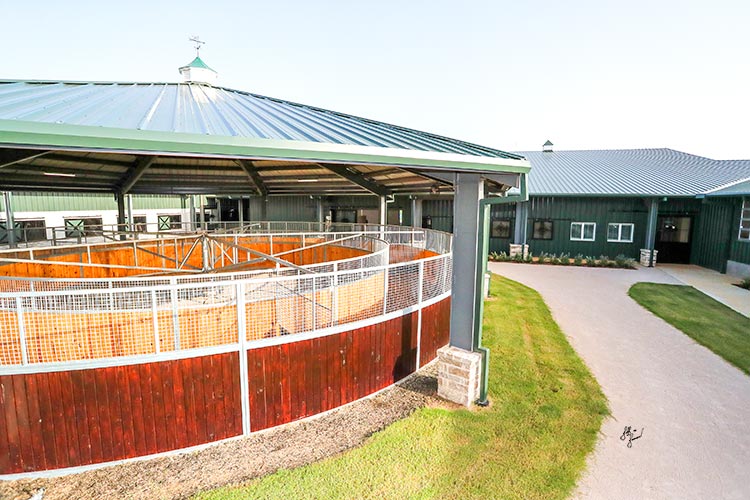

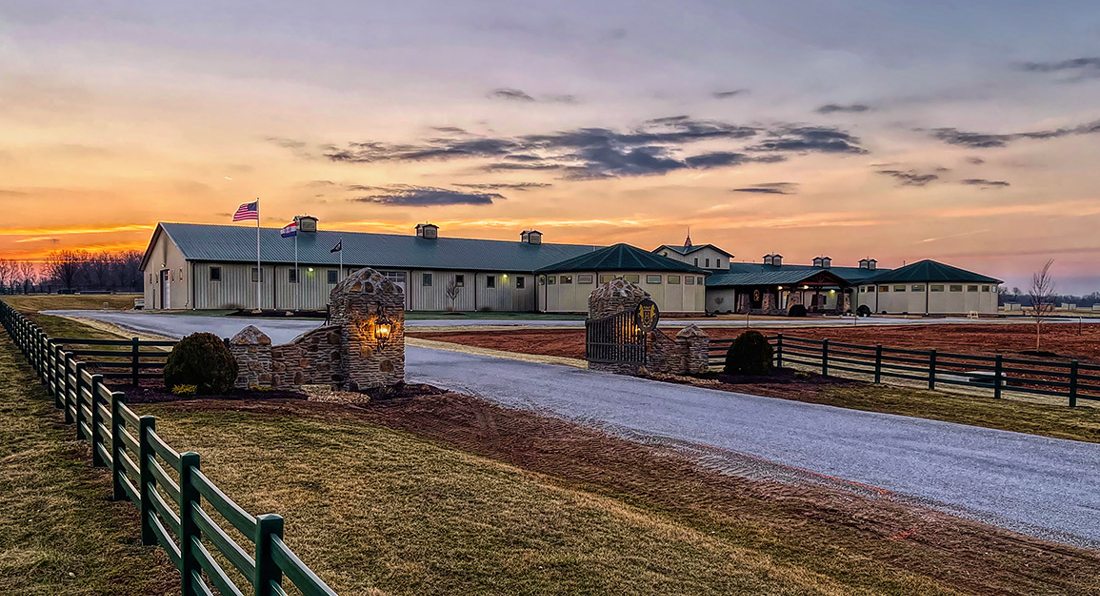
Anyone who has spent time around horses knows how important it is to have a functional facility to train, breed, and care for them. To learn more about building and operating a successful horse show barn, AHT interviewed Jen Wilson, the Director of Operations at Hagale Family Arabians. She is currently consulting on the construction of a new complex for the Hagales breeding operations.
Meeting The Needs
The new facility, Jen explains, will be utilized for breeding and starting prospects, containing two aisles of 18 stalls each for a total of 36. One row will house their up-and-coming 2- and 3-year-olds, and the other aisle will be home to mares and foals. Each stall will have a door that opens to the outside so that the broodmares and young horses are able to be easily turned out. Some unique features of the new building are an aqua-treadmill and a breeding lab. The main barn will remain the primary location for the training of their string of show horses.
Farm Essentials
When asked about her favorite farm features, Jen elaborated more on their breeding lab. Having this on-site and a vet on staff eliminates the need for travel and allows for the flushing of embryos and the collection of the Hagale’s seven stallions, making the breeding process more efficient.
Another unique element of the main barn is their dedicated vet and farrier workspace, providing a space for their trailers to be pulled indoors to work without distraction in a heated or air-conditioned environment.
A key part of their facility that they cannot live without, says Jen, is the hotwalker; which takes care of warming up muscles before a workout and cooling down the same afterward.
And, of course, an essential feature in any barn to keep everything in order and efficient is a storage area to organize blankets and supplies that are used daily such as tack, as well as a washer and dryer to throw dirty towels, blankets, and leg wraps in after a show.
Designing A Barn
Efficiency, Jen says, is the driving force behind the design of the Hagale’s training and breeding buildings. What a typical day on the farm looks like determined the design choices to allow day-to-day operations to run smoothly and economically. Everything is close together and easily accessible. In the training barn, 35 horses per day are worked, so it is imperative to make sure tack, grooming supplies, and equipment is readily available.
Most important is determining your end goal when thinking about constructing a barn, Jen advises, which should be the guiding force behind your design, be it creating a successful training and/or breeding program.
Ultimately, Jen says the Hagales’ goal is to better the Arabian horse industry for everyone, thus their doors are always open and visitors are welcome.
***
Arabian Horse Times also spoke to Lauren Krohn from Oak Haven Farms about their gorgeous facility in Bullard, Texas. Check back in a couple of weeks to hear about their key barn features!
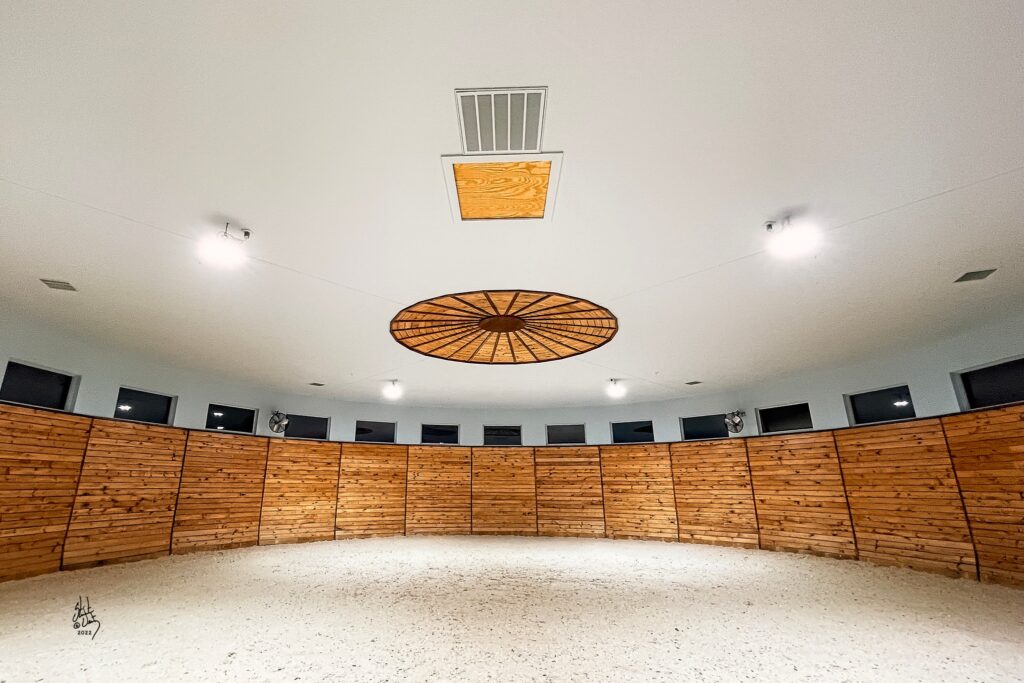
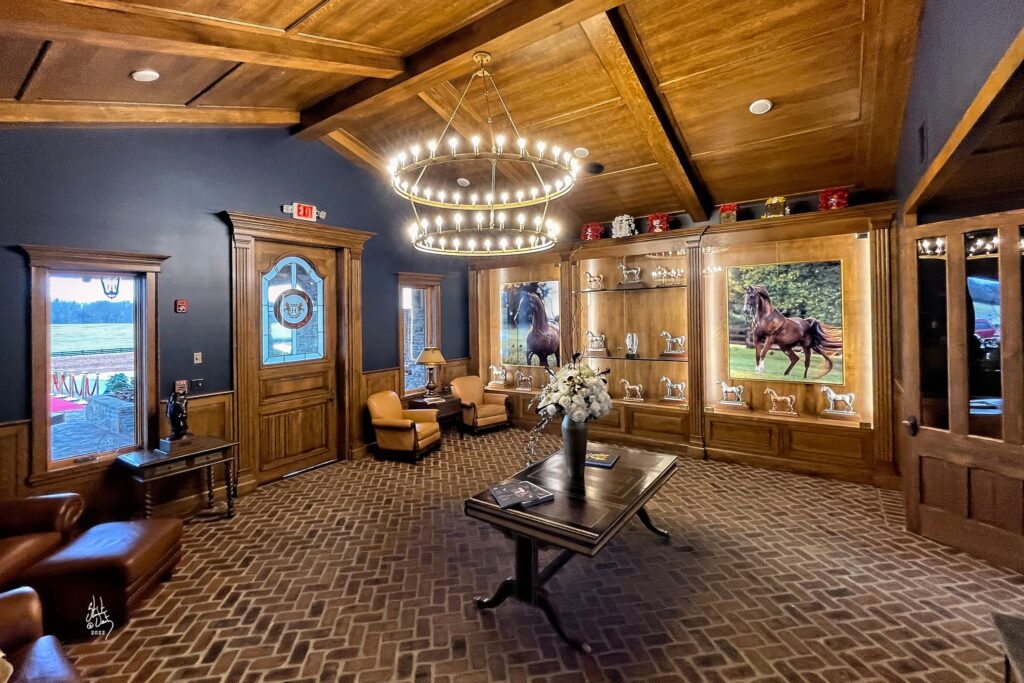
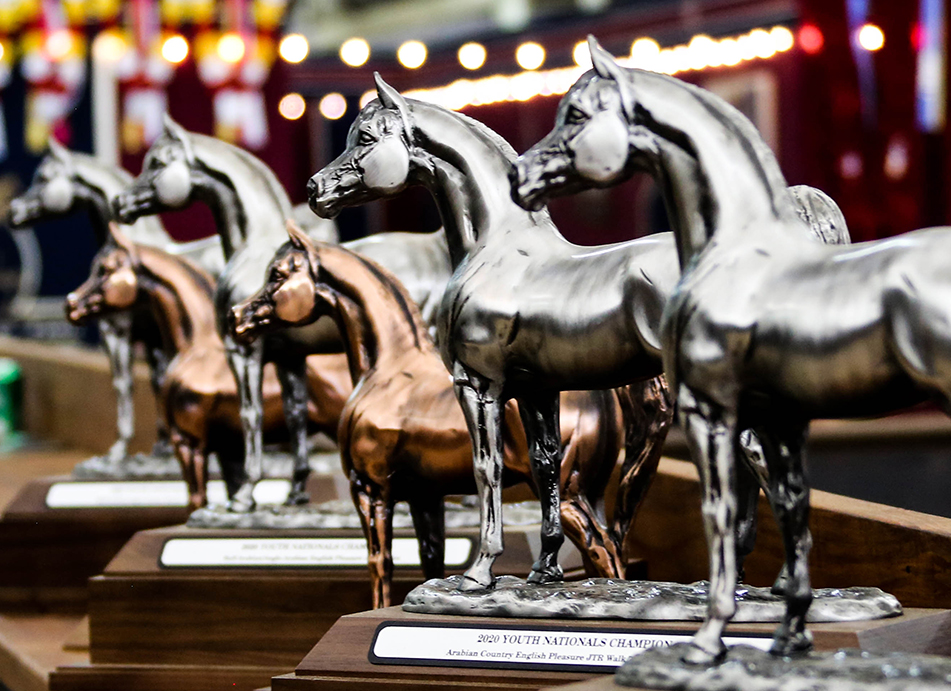
July 13-22, 2023
Oklahoma City Fairgrounds
333 Gordon Cooper Blvd, Oklahoma City, OK 73107

In today’s world, almost everything can be done using social media, including the marketing of horses. Using social media platforms, such as Facebook, has made this easier than ever. However, just because something is easy, does not mean that it is okay to skim over important details that can make or break a sale.
To help you put your best foot forward, AHT spoke to two women who are well-versed in using social platforms to successfully market horses. Sarah Stone manages Palmetto Arabians and Jackie Pakula handles the marketing for Colby Powell Performance Horses.
Creating the Post
When asking them to describe the most important features of marketing a horse successfully on social media, both Jackie and Sarah agreed that having an eye-catching photo of the horse is extremely important. Making sure the photos are clear and highlight the best features of the horse is what matters. The photos do not need to be done by a professional—using a phone camera works just as well—as long as the photos are good quality. Another important part of utilizing social media is making sure to have photos of the horses’ legs, head, neck, and back; all things a potential buyer wants to see.
After a nice photo, including details about the horse is absolutely necessary. These details include the registered name, age, sire and dam, and show history. If the horse has not been shown, be sure to include which division it was bred for. Also helpful: if it is up-to-date on vaccines and shoeing, as well as a few words about its disposition, which helps draw in potential buyers. A photo of the horses’ papers can be included in the post or comments.
Finally, include relevant contact information and be available to communicate with prospective buyers. Responding in a timely manner shows respect to interested parties. Being accessible to answer questions, take phone calls, and potentially take more photos of the horse makes customers feel important and can help move a transaction along faster.
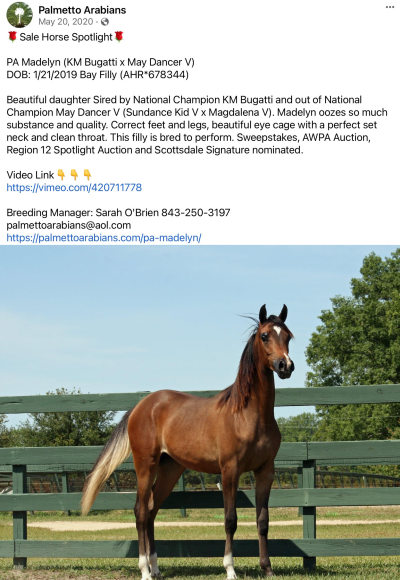
Example of a sale horse posting from Palmetto Arabians
How to Make a Post Successful
When preparing a post, it is important to consider engagement with followers. There are certain days and times where more people will be on their phones and interacting with posts on social media. Google has made it easy to find which times are best to post in order to get the most engagement, and both Jackie and Sarah use Facebook, because it is the most user friendly and has multiple markets to post sale horses. Both use their business pages as well, focusing on certain Facebook groups such as “Arabian/Half Arabian Marketing Connections”. Using groups that are breed or discipline specific reach people who may not follow the business page.
Missteps to Avoid
Common mistakes that often hinder the success of posts include:
But these are mistakes are easy to correct, in order to make a social media sale more successful.
Social media is a wonderful tool for marketing horses to a large audience, but it is easy to skim over the details that prevent a potential sale. By utilizing social platforms in the right way, you can make marketing horses a breeze.
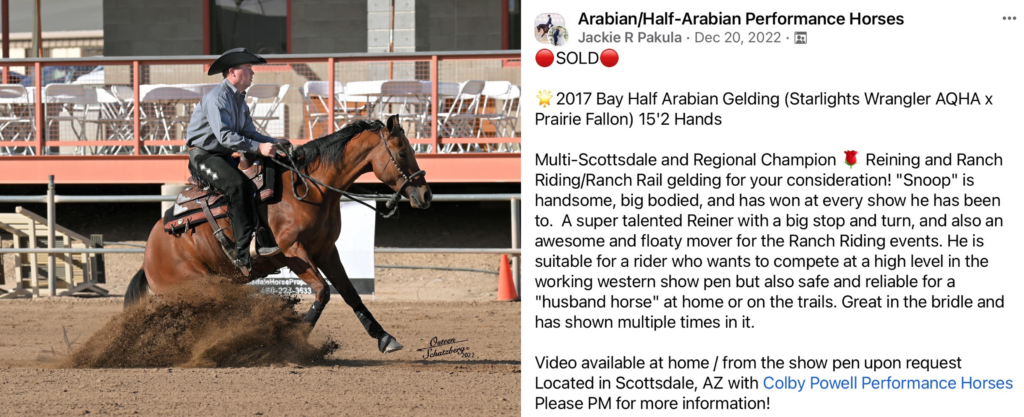
Example of a sale horse posting from Colby Powell Performance Horses
